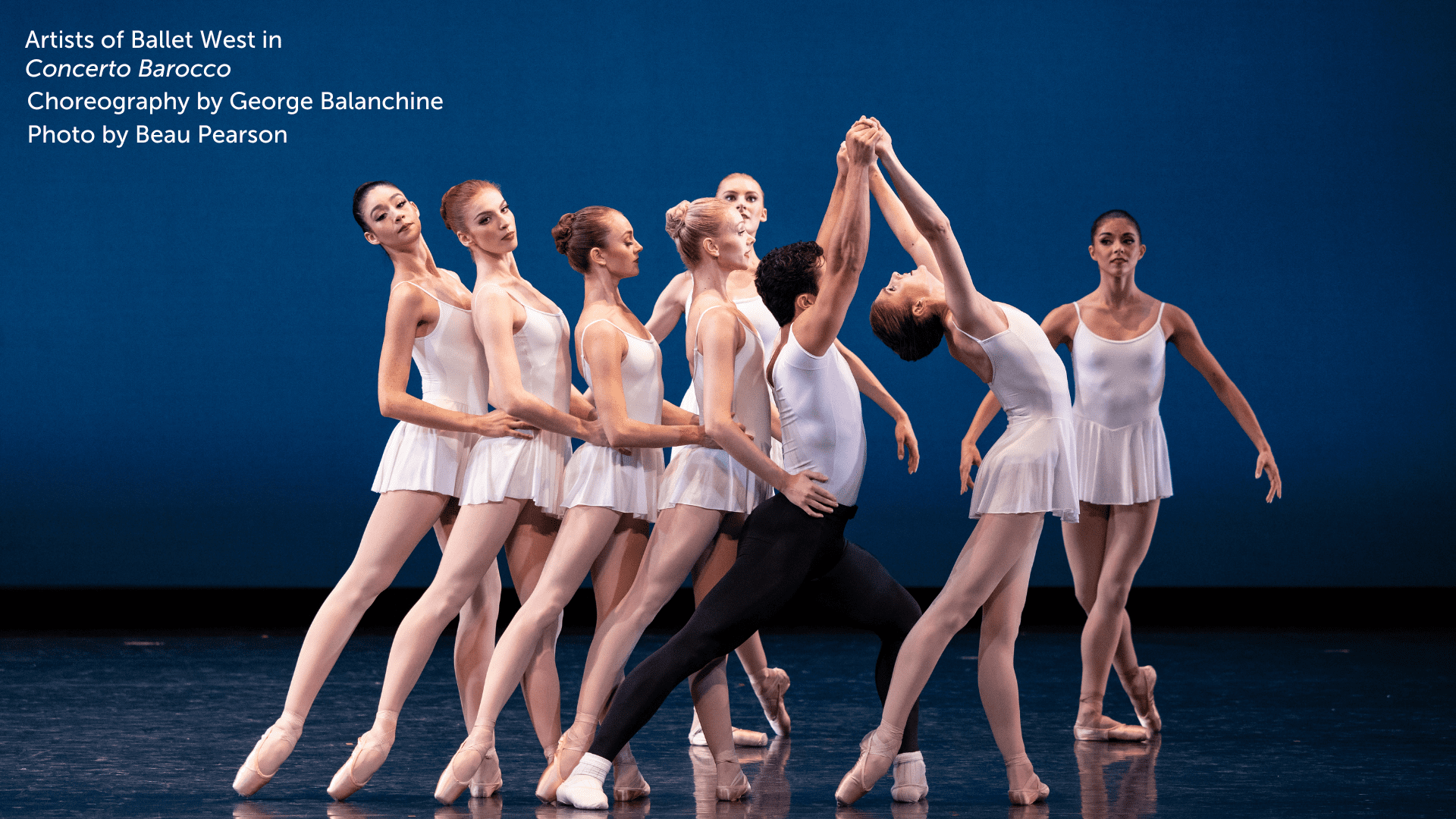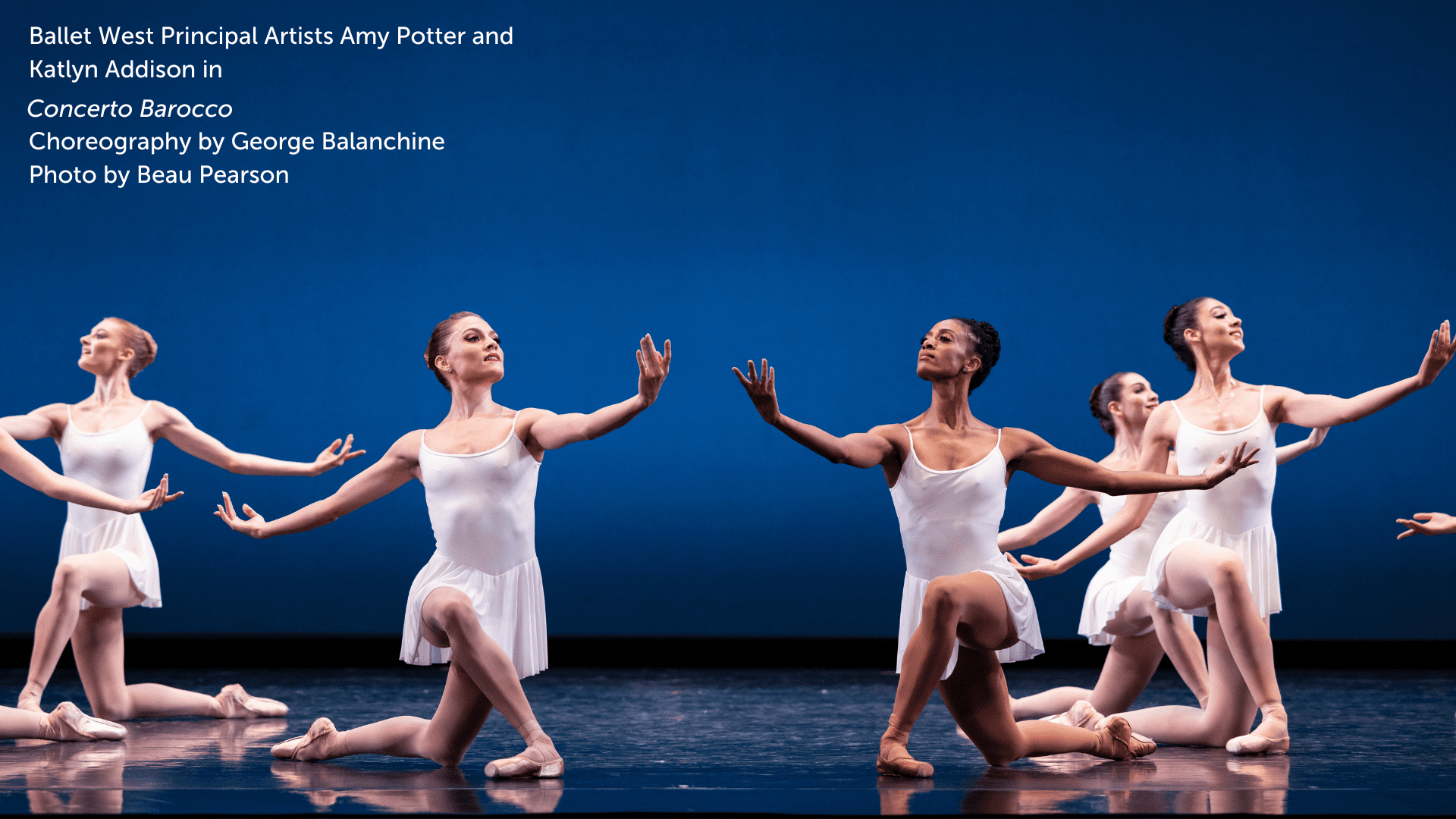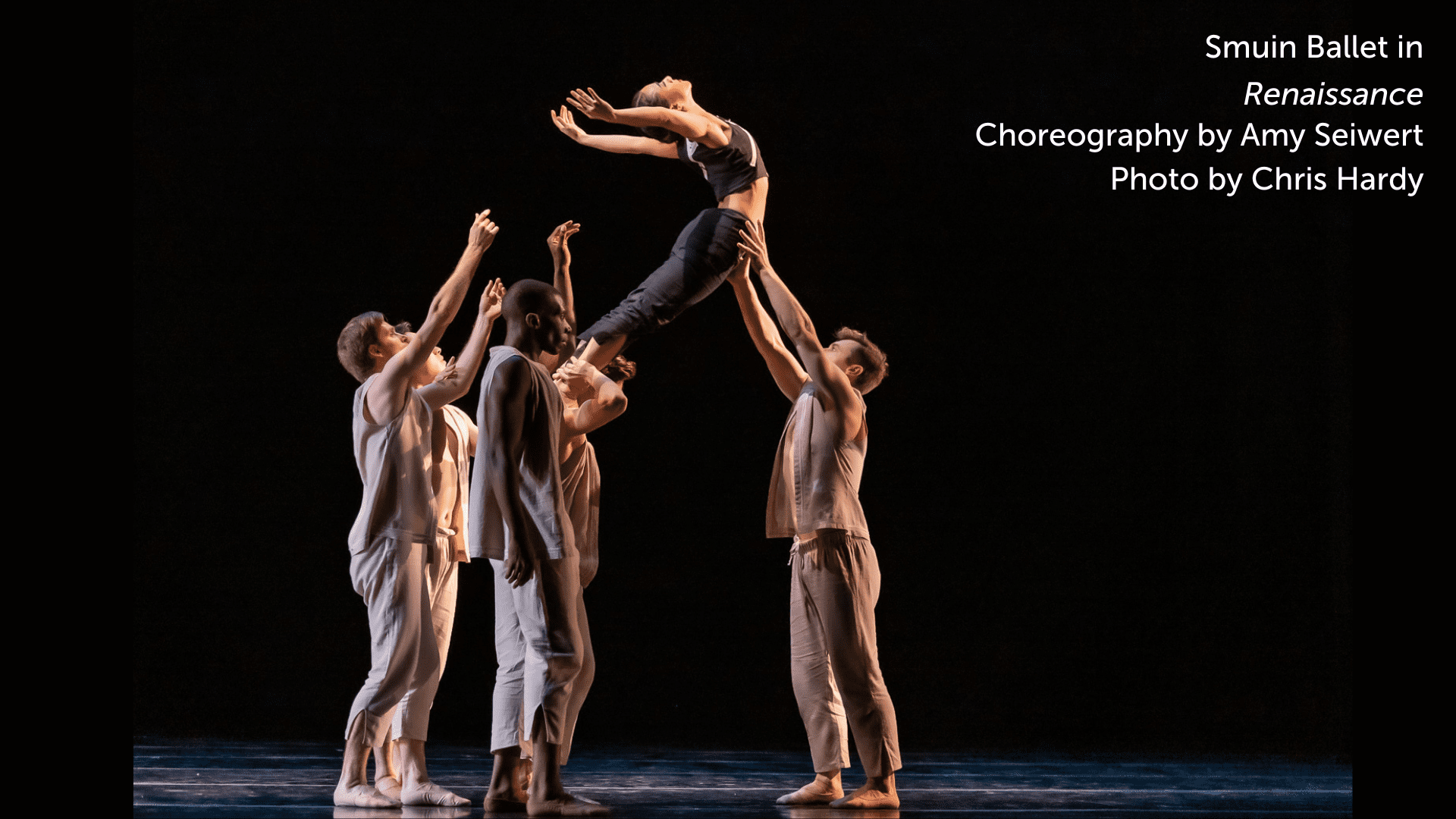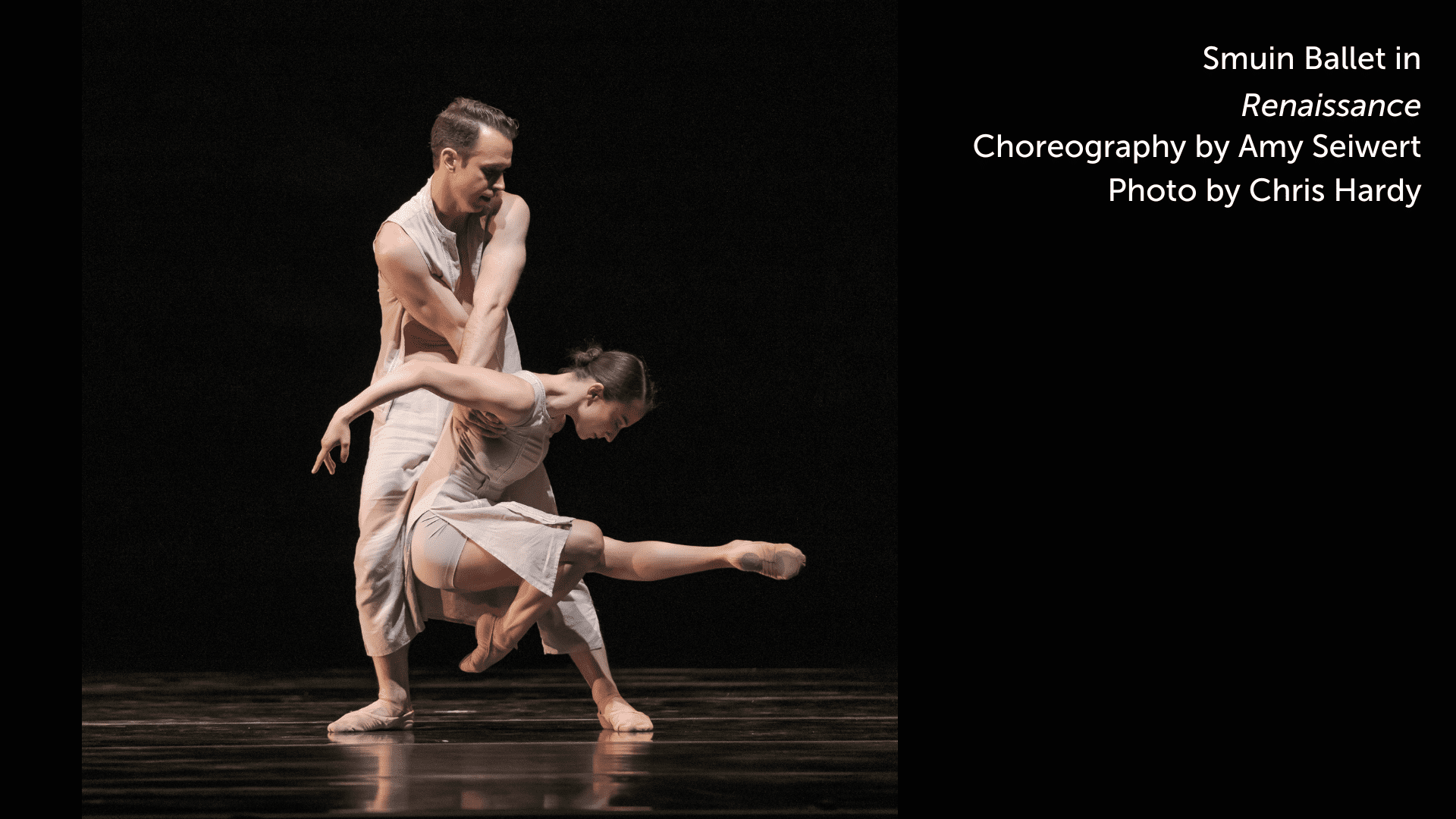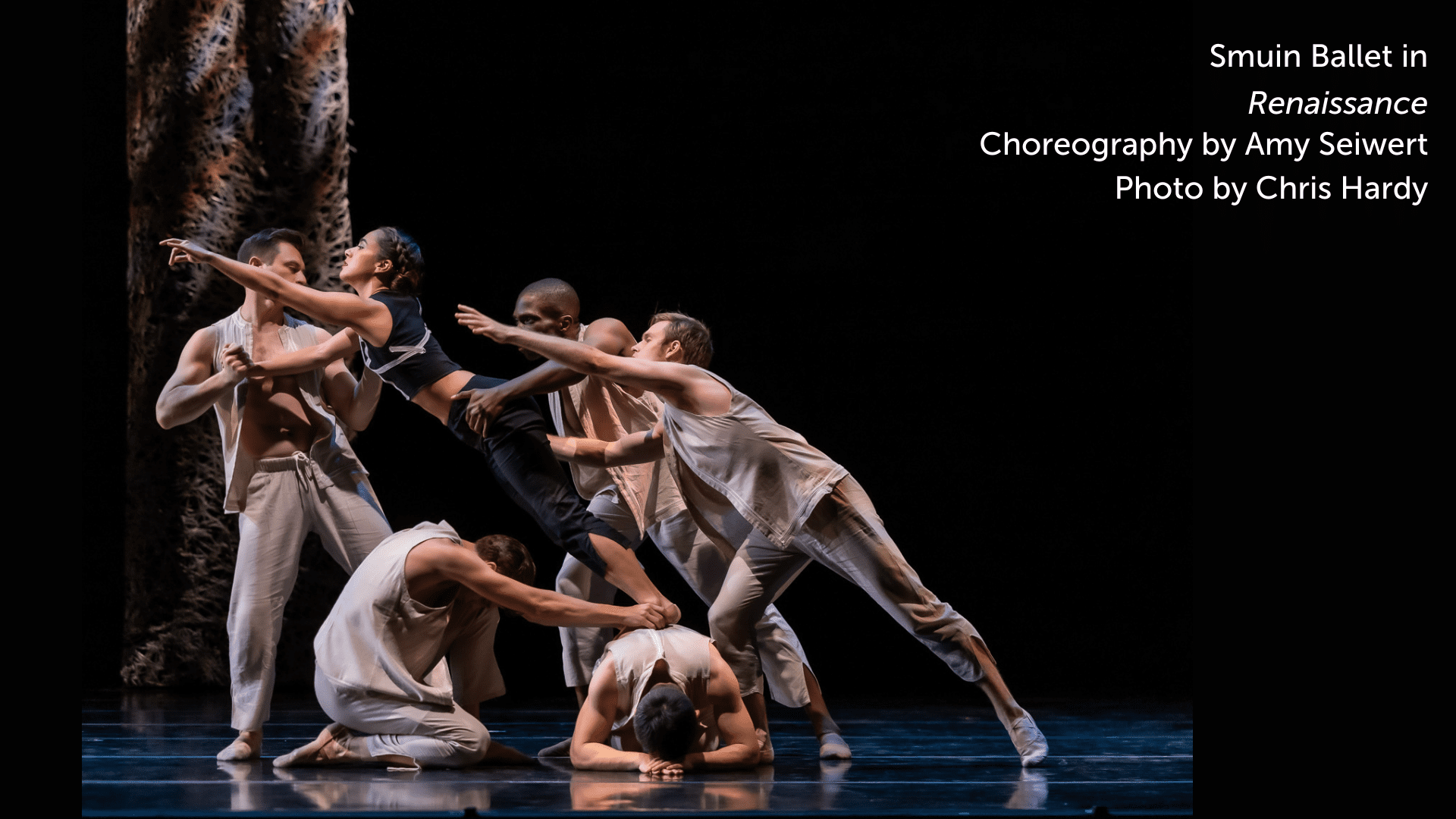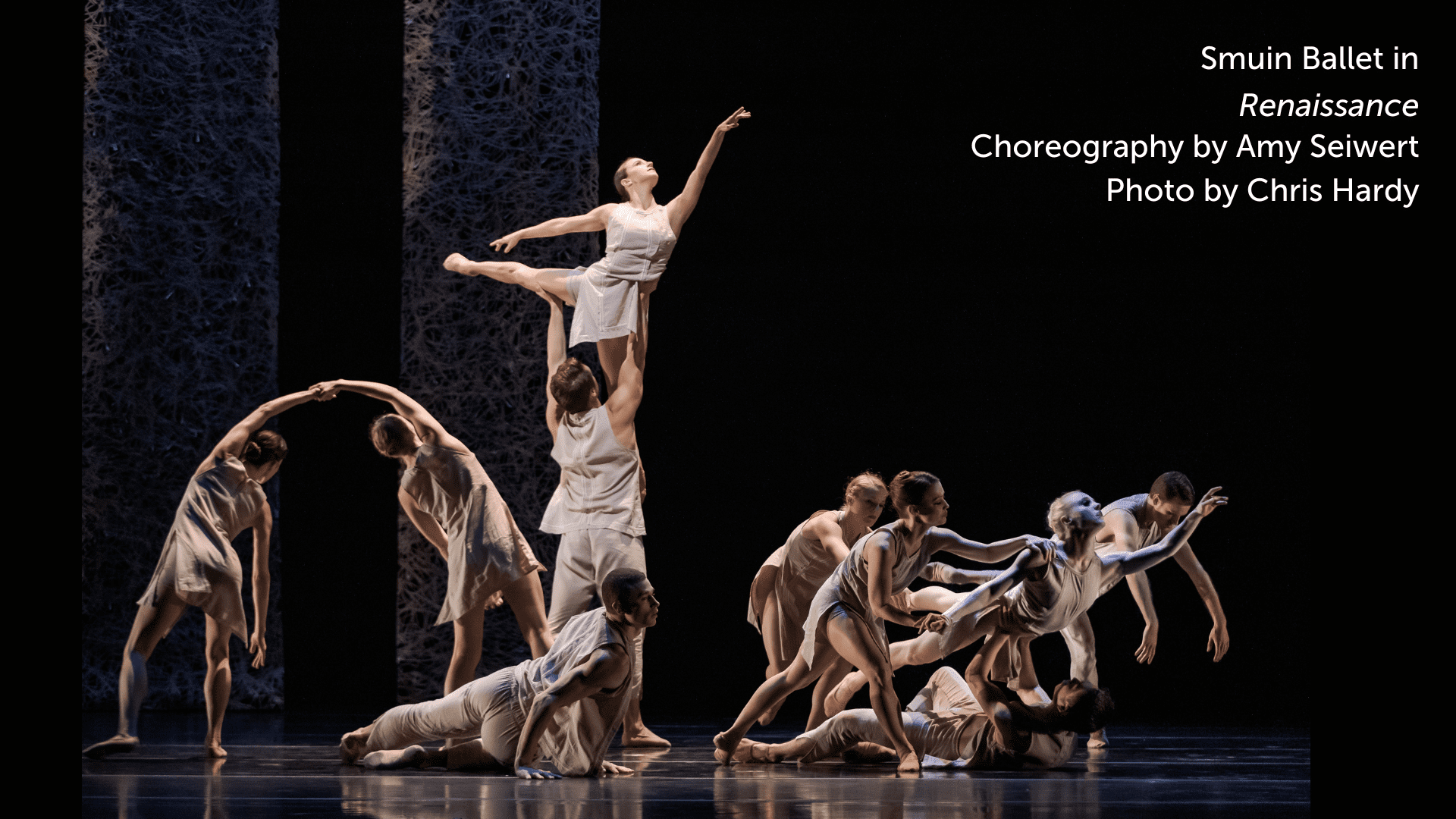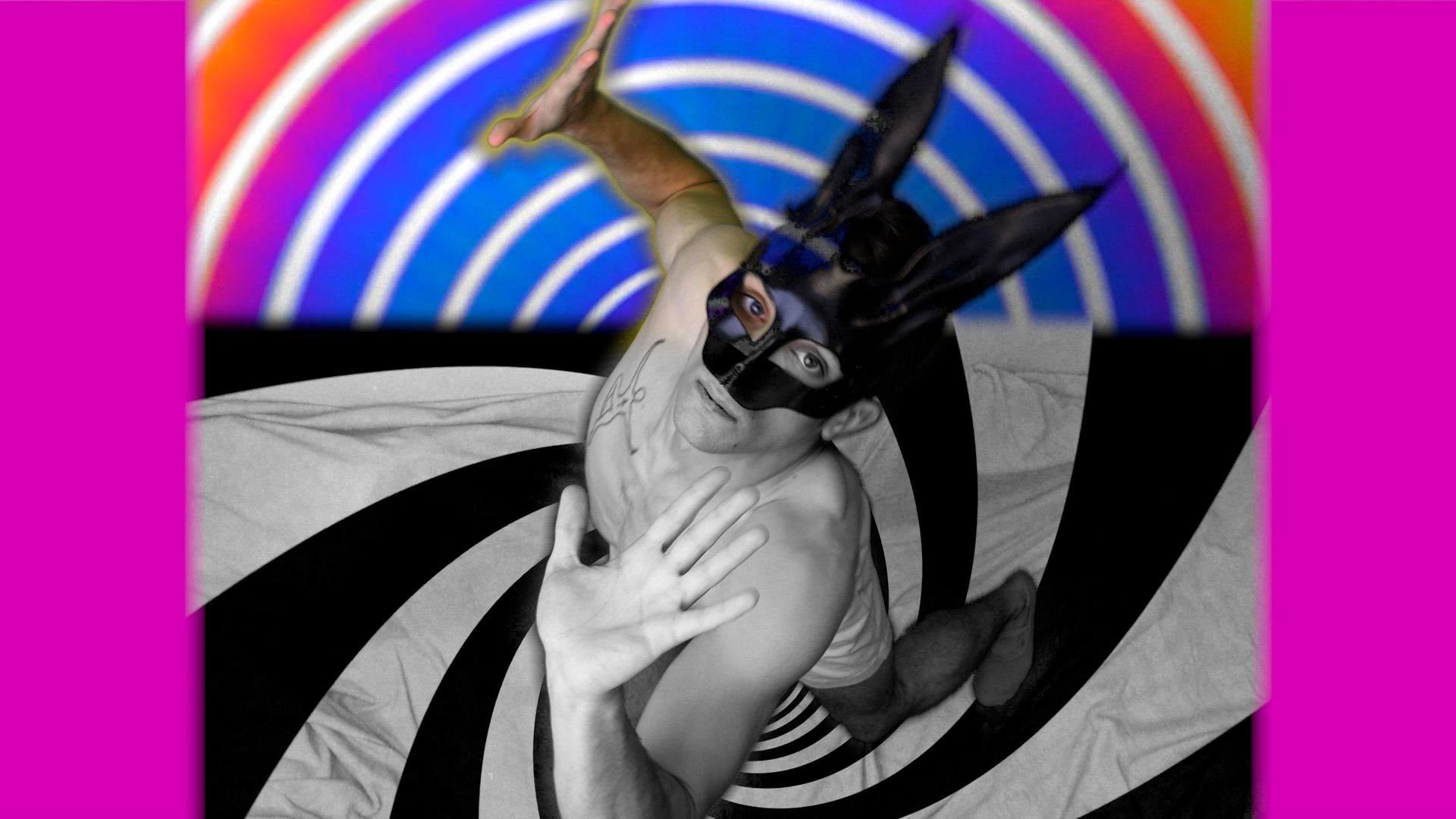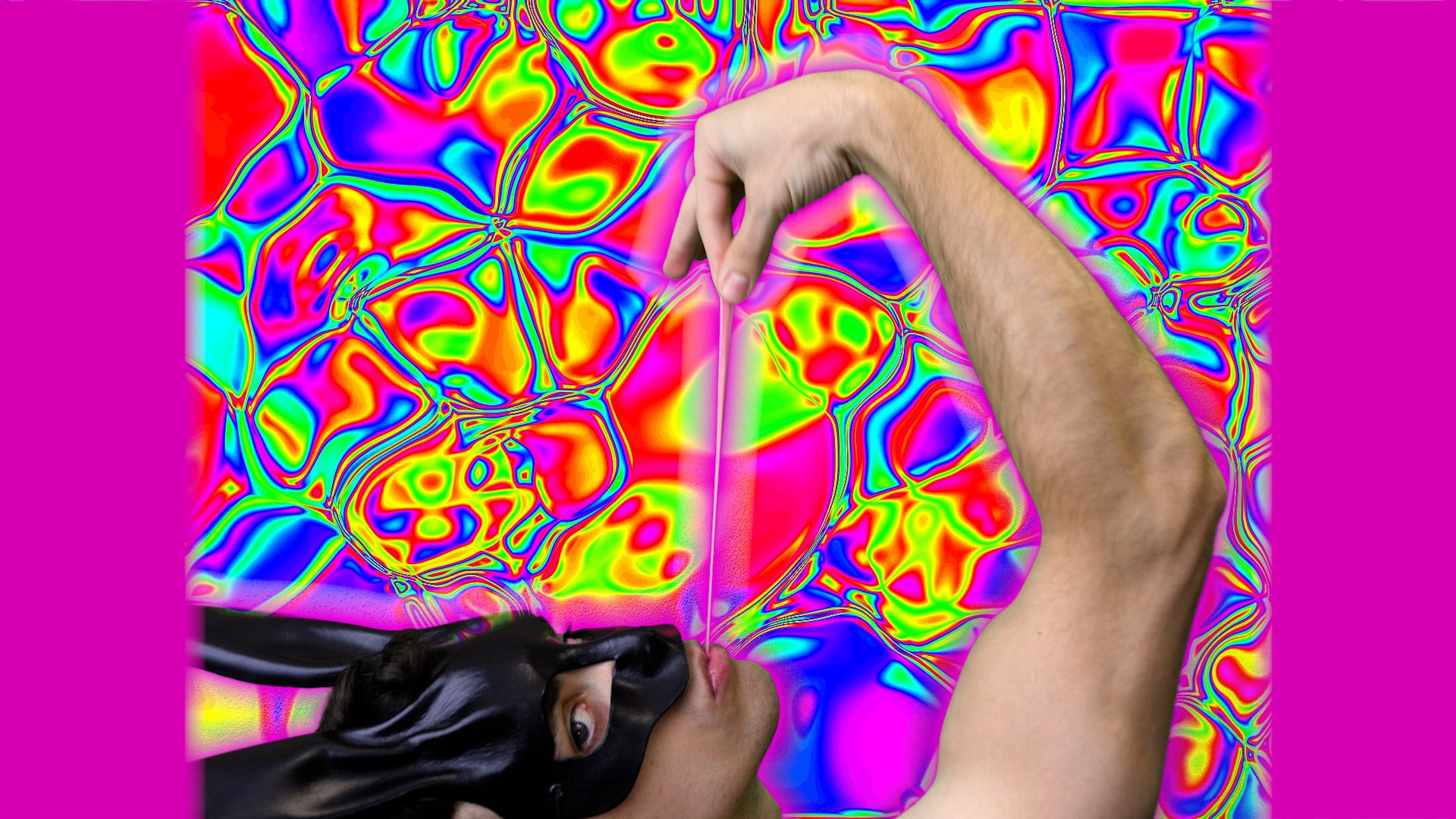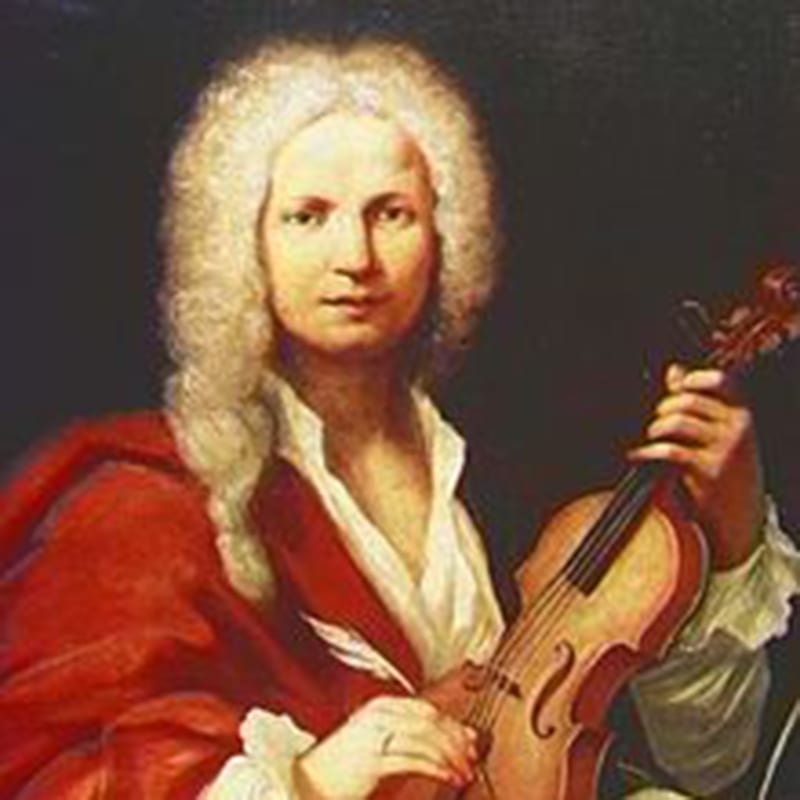Triad: Three Bold Dances
FEB. 16, 17, & 18
The beauty of George Balanchine’s neoclassical ballet, Concerto Barocco, combines with a contemporary work by choreographer Amy Seiwert, titled Renaissance, and an exciting World Premiere by Stephen Mills titled BUBBLEGUM.
Concerto Barocco, a neo-classical masterpiece created by George Balanchine is considered a personification of Bach’s music… “see the music, hear the dance.”
Following on her success from Her Stories, Choreographer, Amy Seiwert, returns with a thrilling Austin premiere, Renaissance. Set to the music of Kitka, a women’s a cappella vocal ensemble, Seiwert’s Renaissance explores music from Eastern European traditions, as it honors the strength of community and women standing together.
TRIAD brings music to life through movement.
Concerto Barocco
CHOREOGRAPHY | George Balanchine
MUSIC | Johann Sebastian Bach’s Concerto in D minor for Two Violins, B.W.V.
LIVE ACCOMPANIMENT | Austin Symphony Orchestra
RUN-TIME | 18 minutes
Renaissance
CHOREOGRAPHY | Amy Seiwert
Commissioned and performed by Smuin Contemporary Ballet in 2019
MUSIC | Selections by Kitka Women’s Vocal Ensemble
RUN-TIME | 24 minutes
BUBBLEGUM – WORLD PREMIERE
CHOREOGRAPHY | Stephen Mills
MUSIC | Selections from Bitter:Sweet, Pentatonix, Kylie Minogue, Antonio Vivaldi, and Ori Lichtik
RUN-TIME | 22 minutes
RUN TIME | 1 hour 49 minutes, including two 20-minute intermissions
3 PERFORMANCES:
- Friday, February 16 at 7:30 p.m.
- Saturday, February 17 at 7:30 p.m.
- Sunday, February 18 at 3:00 p.m.
Please visit our FAQs page for information about parking, discounts, and more.
WHY WE RECOMMEND PURCHASING PERFORMANCE TICKETS *DIRECTLY* FROM BALLET AUSTIN
Ballet Austin strives to share the excitement and beauty of live professional dance with as many community members as possible. *As a 501c3 nonprofit organization, Ballet Austin raises funds throughout the year to help defray part of the production costs in order to bring live performances to you and keep the price of our tickets as low as possible. The following information is intended to assist you as a consumer and help you have the best experience possible.
When you purchase directly from Ballet Austin:
- You are assured your tickets are valid, and your seats are reserved for you/your family/your party.
- You have access to the most affordable ticket prices.* Ballet Austin tickets can range between $15 – $125 dollars (plus applicable fees), depending on location. If you are being asked to pay more per ticket, you are NOT buying from Ballet Austin.
- You have the flexibility to exchange your ticket
/s to another performance for a small handling fee, as tickets remain available.
If you choose to purchase Ballet Austin tickets from sources other than Ballet Austin, we recommend that you:
- Never pay cash or use apps such as Venmo to purchase tickets.
- Verify performance dates/times and check for sold-out performances BEFORE purchasing from a third-party seller or service by visiting the Ballet Austin website.
- Check the Long Center’s Dell Hall seating map to confirm the existence of the seats being offered to you. Long Center Seating Chart
NOTE: Issues related to tickets purchased from a third-party seller will need to be discussed with that company. Ballet Austin will have no record of these sales.
Our goal for each Ballet Austin performance is to create wonderful, lasting memories for you, your family, and your friends. If you have questions, let us help you by contacting our box office at 512.476.2163 or by email at boxoffice@balletaustin.org. We look forward to seeing you soon.
VIDEO GALLERY
Videos by Paul Michael Bloodgood
PHOTO GALLERY
Photography by Chris Hardy and Beau Pearson. BUBBLEGUM images created by Paul Michael Bloodgood.
OPENING NIGHT AT BALLET AUSTIN
Elevate your theater experience by attending TRIAD on Friday, February 16 for Opening Night at Ballet Austin, featuring special offerings and experiences to celebrate the first performance of each production.
Crafted specially for this event, our TRIAD Cocktail Experience includes:
- 3 unique cocktails inspired by each dance work, spread throughout the evening
- non-alcoholic “mocktail” options for each beverage
- a pre-show charcuterie box, available in options for 1 or 2 people
This experience MUST be ordered in advance.
Orders MUST be placed by Wednesday, February 14th.
Already purchased tickets for Opening Night?
MEET THE ARTISTS
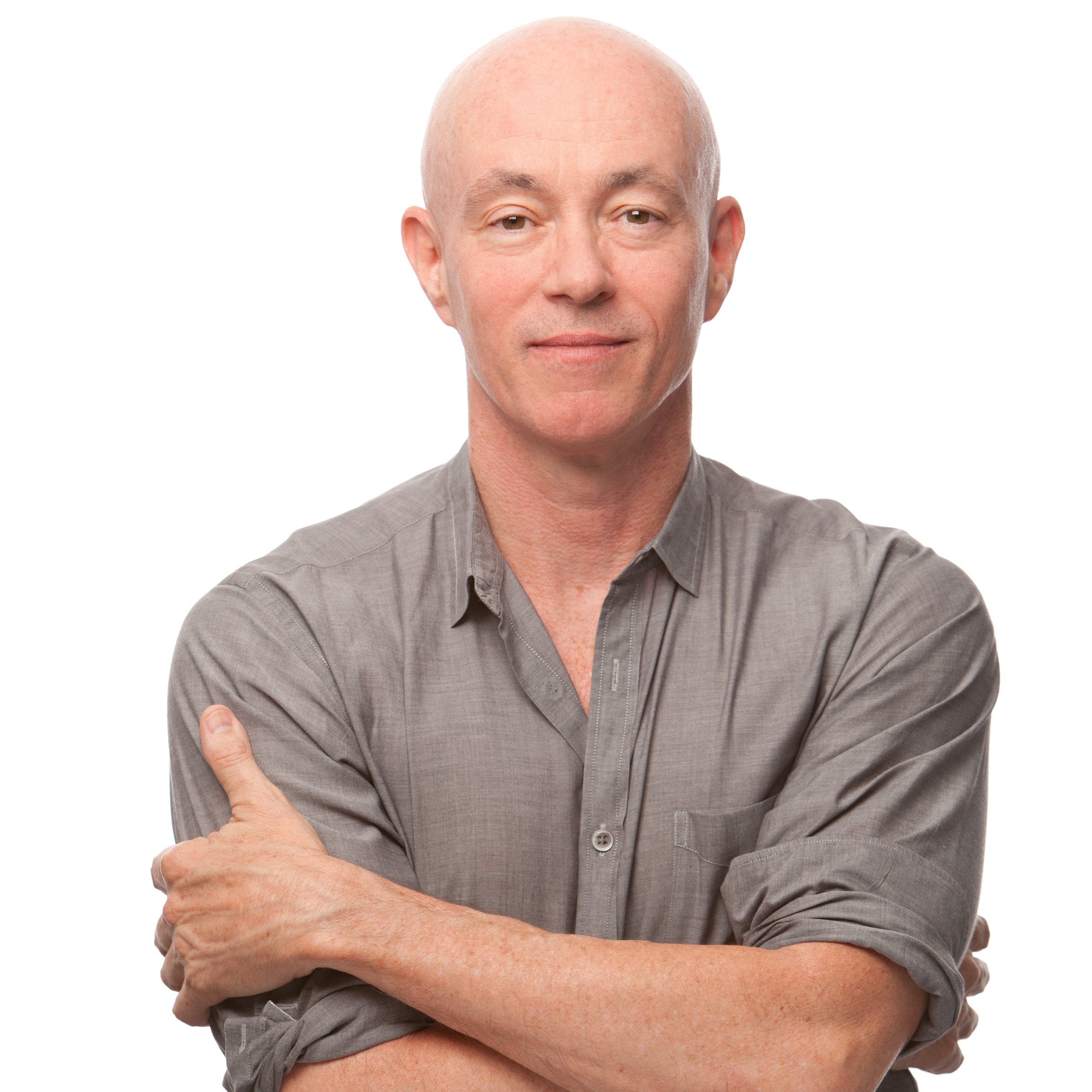
STEPHEN MILLS
Choreography

GEORGE BALANCHINE
Choreography

AMY SEIWERT
Choreography
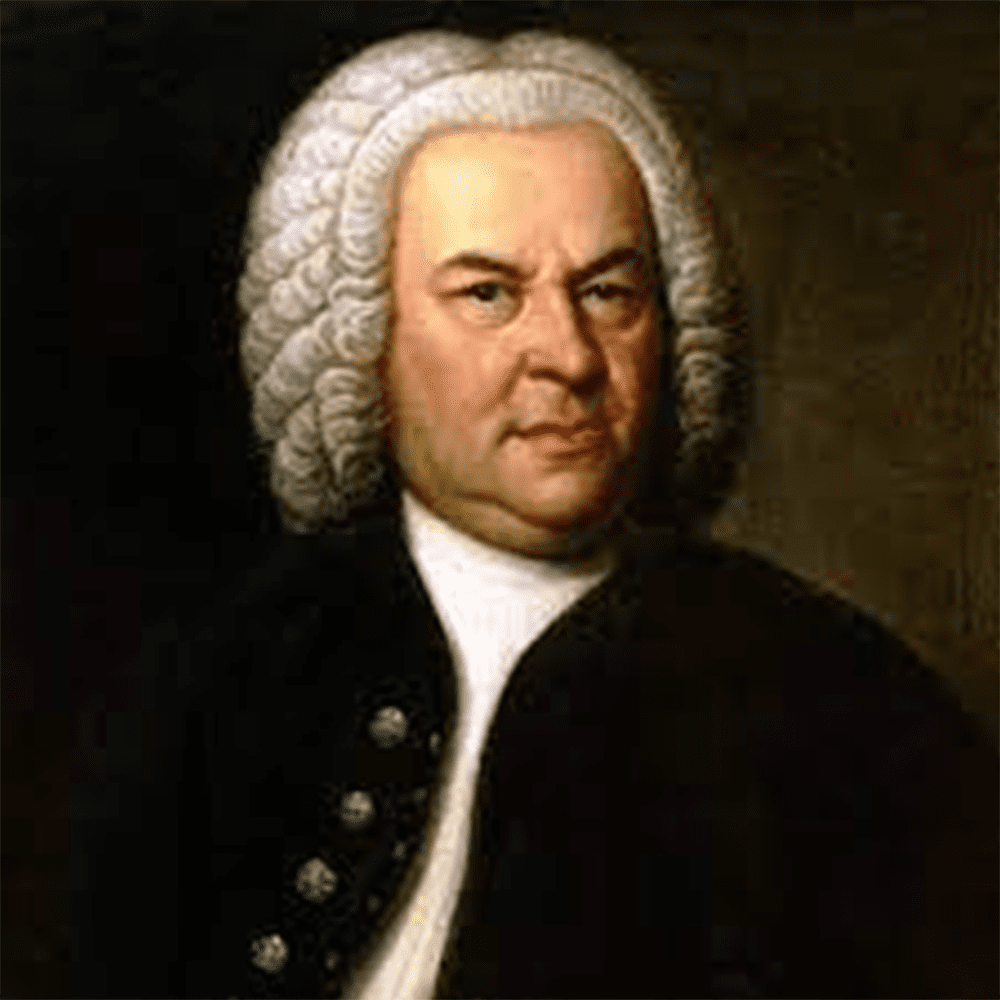
JOHANN SEBASTIAN BACH
Music

KITKA WOMEN’S VOCAL ENSEMBLE
Music
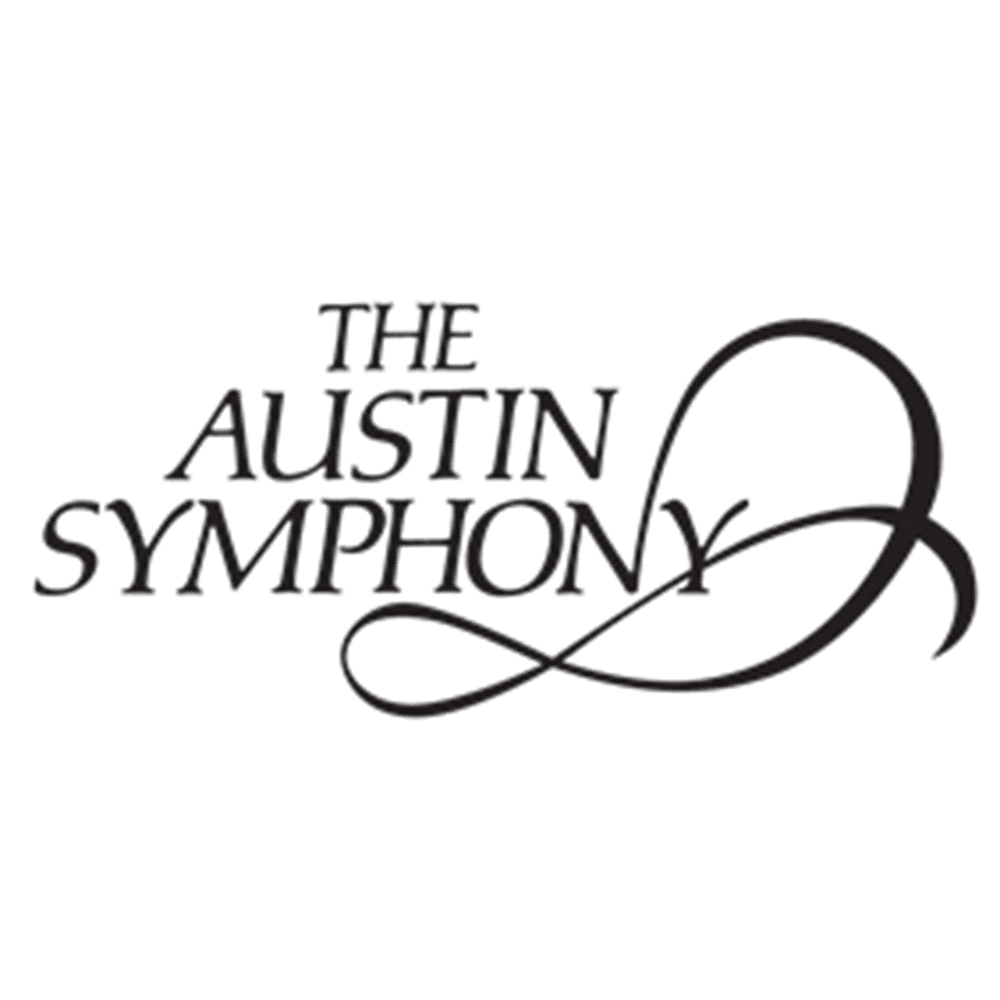
AUSTIN SYMPHONY ORCHESTRA
Live Accompaniment
Known for his innovative and collaborative choreographic projects, Stephen Mills has works in the repertoires of dance companies across the United States and around the world.
His international career began in 1998 after being chosen Prix d’Auteur at les Rencontres Chorégraphiques Internationales de Seine-Saint-Denis in Paris. In his inaugural season as Artistic Director of Ballet Austin in 2000, Mills attracted national attention with Hamlet, hailed by Dance Magazine as “…sleek and sophisticated.”
Mills’ works showcased at The Kennedy Center include A Midsummer Night’s Dream, The Taming of the Shrew, and performances at the Ballet Across America Festival in collaboration with The Suzanne Farrell Ballet.
In 2005 Mills developed a community-wide human rights collaborative dialogue culminating in his signature work Light/The Holocaust & Humanity Project for which he received the Audrey and Raymond Maislin Humanitarian Award from The Anti-Defamation League. Mills contributed a podcast about Light to the Voices on Anti-Semitism series at The United States Holocaust Memorial Museum and was invited to speak about the work at The United Nations in 2014. Light has been performed in five U.S. cities, in three cities in Israel, and was recently featured in an Emmy Award-winning PBS documentary, Sharing Light.
George Balanchine, who is regarded as the foremost contemporary choreographer in the world of ballet, came to the United States in late 1933 following an early career throughout Europe.
His trip to the United States in 1933 was at the invitation of Lincoln Kirstein, the Boston born dance connoisseur whose dream it was to establish an American school of ballet equivalent to the European schools, as well as an American ballet company. Kirstein had met Balanchine in Paris after seeing a performance by the company that Balanchine was then directing there, Les Ballets 1933; the two were introduced by Romola Nijinsky, widow of the famous Russian dancer, whom Kirstein assisted in her research for a biography of her late husband.
The first result of the Balanchine Kirstein collaboration was The School of American Ballet, founded in early 1934 (the first day of class, in fact, was January 1 of that year) and existing to the present day. It later became the training ground for dancers going into New York City Ballet, which Balanchine and Kirstein were to establish together after 14 more years, in 1948. Balanchine’s first ballet in this country was Serenade, choreographed in 1934 to music by Tchaikovsky, which was premiered outdoors on the estate of a friend near White Plains, New York, as a workshop performance.
In 1935, Kirstein and Balanchine set up a touring company of dancers from the school and called it the American Ballet. That same year the Metropolitan Opera invited the company to become its resident ballet, with Balanchine as the Met’s ballet master. Tight funding, however, permitted Balanchine to mount only two completely dance-oriented works while with the Met, a dance drama version of Gluck’s Orfeo and Eurydice and an all-Stravinsky program, featuring a revival of one of Balanchine’s first ballets, Apollo, plus two new works, Le Baiser de la Fée, and Card Game.
Despite the popular and critical success of the latter program, Balanchine and the Met parted company in early 1938, and Balanchine spent his next few years teaching at the School and working in musical theatre and films. In 1941, he and Kirstein assembled the American Ballet Caravan, sponsored by Nelson Rockefeller, which toured South America with such new Balanchine creations as Concerto Barocco and Ballet Imperial (later renamed Tchaikovsky Piano Concerto No. 2). Then from 1944 to 1946, Balanchine was called in as artistic director to help revitalize the Ballet Russe de Monte Carlo; he created Raymonda and La Sonnambula for them.
In 1946 Balanchine and Kirstein collaborated again to form Ballet Society, a company which introduced New York subscription only audiences over the next two years to such new Balanchine works as The Four Temperaments (1946) and Stravinsky’s Renard (1947) and Orpheus (1948).
On October 11, 1948, Morton Baum, chairman of the City Center finance committee, saw Ballet Society in a City Center Theater program that included Orpheus, Serenade, and Symphony in C (a ballet which Balanchine had created for the Paris Opera Ballet under the title Le Palais de Crystal the previous year). Baum was so highly impressed that he initiated negotiations that led to the company’s being invited to join the City Center municipal complex (which at that time the New York City Drama Company and the New York City Opera were a part of) as the “New York City Ballet.” Balanchine’s talents at last had found a permanent home.
Since that time, Balanchine served as artistic director for New York City Ballet, choreographing (either wholly or in part) the majority of the now 175 productions the company has introduced since its inception. Among the most noteworthy were The Firebird (1949; restaged with Jerome Robbins, 1970); Bourrée Fantasque (1949); La Valse (1951); The Nutcracker (his first full length work for the company), Ivesiana and Western Symphony (1954); Allegro Brillante (1956); Agon (1957); Seven Deadly Sins (a revival of the original Les Ballets 1933 production) and Stars and Stripes(1958); Episodes (1959); Monumentum Pro Gesualdo and Liebeslieder Walzer (1960); A Midsummer Night’s Dream (1962); Movements for Piano and Orchestra and Bugaku (1963); Don Quixote (in three acts) and Harlequinade (in two acts) (1965); Jewels (1967) (his first full length plotless ballet) and Who Cares? (1970). In June 1972, he choreographed Stravinsky Violin Concerto, Duo Concertant, Choral Variations on Bach’s Von Himmel Hoch, Scherzo à la Russe, Symphony in Three Movements, Divertimento from Le Baiser de la Fée, and new versions of Pulcinella (with Robbins) and Danses Concertantes for the New York City Ballet Stravinsky Festival.
The son of a composer, Balanchine early in life gained a knowledge of music that far exceeded that of most of his fellow choreographers. He began studying the piano at the age of five and following his graduation in 1921, from the Imperial Ballet School (the St. Petersburg academy where he had started his dance studies at the age of nine), he enrolled in the state’s Conservatory of Music, where he studied piano and musical theory, including composition, harmony and counterpoint, for three years. Such extensive musical training made it possible for Balanchine as a choreographer to communicate with a composer of such stature as Igor Stravinsky; the training also gave Balanchine the ability to reduce orchestral scores on the piano, an invaluable aid in translating music into dance.
Balanchine made his own dancing debut at the age of ten as a Cupid in the Maryinsky Theatre Ballet Company’s production of The Sleeping Beauty. He joined the company as a member of the corps de ballet at 17 and staged one work for them, called Enigmas. Most of his energies during this period, however, were concentrated on choreographic experiments outside the company.
In the summer of 1924, Balanchine was one of the four dancers who left the newly formed Soviet Union for a tour of Western Europe. The others were Tamara Geva, Alexandra Danilova, and Nicholas Efimov, all of whom later became well known dancers in Europe and the United States. All four dancers were invited by impresario Serge Diaghilev to audition for his Ballets Russes in Paris and were accepted into the company.
Diaghilev also had his eye on Balanchine as a choreographer as well, and after watching him stage a new version of the company’s Stravinsky ballet, Le Rossignol, Diaghilev hired him as ballet master to replace Bronislava Nijinska. Shortly after this, Balanchine suffered a knee injury which limited his dancing and correspondingly bolstered his commitment to full time choreography.
Balanchine served as ballet master with Ballets Russes until the company was dissolved following the death of Diaghilev in 1929. After that, he spent the next few years on a variety of projects which took him all over Europe: choreographing for the Royal Danish Ballet; making a movie with former Diaghilev ballerina Lydia Lopoukhova (then the wife of British economist John Maynard Keynes) in England; staging dance extravaganzas for Britain’s popular Cochran Musical Theatre Revues; and working with DeBasil’s Ballet Russe de Monte Carlo (where he discovered the young Tamara Toumanova).
Returning to Paris, Balanchine formed his own company, Les Ballets 1933, collaborating with such leading artistic figures as Bertolt Brecht and Kurt Weill (Seven Deadly Sins), the artist Pavel Tchelitchev, and composers Darius Milhaud and Henri Sauguet. It was during this period that the meeting with Lincoln Kirstein occured, which was to lead to Balanchine’s move from Europe to the United States.
Balanchine has choreographed numerous musical comedies over the years, including On Your Toes (of which Slaughter on Tenth Avenue, a work in New York City Ballet’s repertory, was a part), Cabin in the Sky, Babes in Arms, Where’s Charley?, Song of Norway, The Merry Widow, and The Ziegfield Follies of 1935. His film credits include Star Spangled Rhythm, I Was An Adventuress, and Goldwyn Follies. He choreographed the operasThe Rake’s Progress and The Magic Flute for the Met and he collaborated with Stravinsky on the television ballet, Noah and the Flood, in 1962.
Balanchine’s style has been described as neoclassic, a reaction to the Romantic anticlassicism (which had turned into exaggerated theatricality) that was the prevailing style in Russian and European ballet when he had begun to dance. As a choreographer, Balanchine has generally tended to de-emphasize plot in his ballets, preferring to let “dance be the star of the show,” as he once told an interviewer.
He always preferred to call himself a craftsman rather than a creator, comparing himself to a cook or a cabinetmaker (two crafts in which he was rather skilled). He was known throughout the dance world for the calm and collected way in which he works with his dancers and colleagues.
Balanchine himself has written: “We must first realize that dancing is an absolutely independent art, not merely a secondary accompanying one. I believe that it is one of the great arts. The important thing in ballet is the movement itself, as it is sound which is important in a symphony. A ballet may contain a story, but the visual spectacle, not the story, is the essential element. The music of great musicians, it can be enjoyed and understood without any verbal introduction and the choreographer and the dancer must remember that they reach the audience through the eye and the audience, in its turn, must train itself to see what is performed upon the stage. It is the illusion created which convinces the audience, much as it is with the work of a magician. If the illusion fails, the ballet fails, no matter how well a program note tells the audience that it has succeeded.”
Balanchine’s long time friend and collaborator, Igor Stravinsky, once described their association on one particular ballet as follows: “Balustrade, the ballet that George Balanchine and Pavel Tchelitchev made of the Violin Concerto, was one of the most satisfactory visualizations of any of my works. Balanchine composed the choreography as he listened to my recording, and I could actually observe him conceiving gesture, movement, combination, and composition. The result was a series of dialogues perfectly complimentary to and coordinated with the dialogues of the music. Hofmannsthal once said to Strauss: ‘Ballet is perhaps the only form of art which permits real intimate collaboration between two people gifted with visual imagination.’”
Architect of, and principal choreographer for, the New York City Ballet’s Homage àagrave; Ravel festival, Balanchine brought to life a three week celebration of 16 new ballets of which eight were his own creations. At a ceremony held on the evening of the Company’s Ravel Festival Gala at the New York State Theater in May 1975, the French Government proclaimed him a member of the Legion of Honor. In an extraordinary gesture of esteem, Balanchine was awarded the rank of Officer, a position usually reserved for those with many years of prior membership in the Legion.
Also in the spring of 1975, the Entertainment Hall of Fame in Hollywood inducted Balanchine as a member in a nationally televised special, hosted by Gene Kelly. The first choreographer so honored, he joins the ranks of such show business luminaries as Fred Astaire, Walt Disney and Bob Hope. Additionally, in May 1975, the National Institute of Arts and Letters presented him with a rarely given award for Distinguished Service to the Arts, an honor of special significance from the 250 leading American artists who comprise the Institute.
In the last few years, Balanchine has produced two spectacular choreographic achievements. The first was the hour long Bicentennial tributeUnion Jack which premiered in May 1976. In the Spring of 1977 came perhaps the most lavish production in the New York City Ballet’s repertory, Vienna Waltzes, which was greeted with resounding critical and popular acclaim. Through the wonders of television, millions of people have been able to see New York City Ballet in their own homes. Choreography by Balanchine, a four part Dance in America presentation on the PBS series Great Performances, began in December 1977. Included on the programs have been The Four Temperaments, Tzigane, Prodigal Son, Allegro Brillante, segments of Jewels and Ballo della Regina, one of his more recent works. Balanchine travelled to Nashville with the company for the video tapings in 1977 and 1978 and personally supervised every shot, in some cases revising steps or angles to be compatible with the camera. The series has been broadly applauded by critics and audiences over the country and was nominated for an Emmy.
In January 1978, New York City Ballet participated in the acclaimed PBS series Live from Lincoln Center for the first time. Coppélia, choreographed by George Balanchine and Alexandra Danilova in 1974, was seen live from the stage of the New York State Theater at Lincoln Center. This presentation also netted Balanchine an Emmy nomination.
Although New York City Ballet has entered its fourth decade, the energy and achievements of George Balanchine continue unabated. Two of his most popular recent works, Ballo della Regina and Kammermusik No. 2 were premiered in 1978, and in December 1978, Balanchine, along with Marian Anderson, Fred Astaire, Richard Rodgers, and Arthur Rubinstein, was one of the five recipients of the First Kennedy Center Honors. The Awards, which were presented by President Carter in an official ceremony at the White House, were followed by a nationally televised program honoring the recipients and their achievements. The citation read in part: “Each has raised the artistic standards to which successors must aspire, but more importantly, each, by talent and dedication, has raised our hearts.”
The 1980’s promised even more in terms of both creativity and recognition. Balanchine introduced four new works to New York City Ballet audiences in the spring of 1980: Ballade, to music by Gabriel Fauré; Walpurgisnacht Ballet from Charles Gounod’s opera Faust (this ballet was created for the Paris Opera in 1975, but was restaged for the New York City Ballet); Richard Strauss’ Le Bourgeois Gentilhomme, (Balanchine created this comic ballet for the New York City Opera in April, 1979, and it was first performed by the New York City Ballet in May 1980), and finally, in June 1980, Robert Schumann’s Davidsbundlertanze.
Also, in the spring of 1980, Balanchine was honored by the National Society of Arts and Letters with their Gold Medal of Merit, and by the New York Chapter of the American Heart Association with their Heart of New York Award. He was also informed that the Austrian Government would be awarding him the Austrian Cross of Honor for Science and Letters, First Class. This Award joined his French Legion of Honor, his French Commander of the Order of Arts and Letters decoration, and his 1978 Knighthood of the Order of Dannebrog, First Class, given by Queen Margrethe II of Denmark, on the list of stellar honors given by foreign Governments for his services and contributions to the artistic development of the 20th century.
Source: New York City Ballet
Amy Seiwert serves as the Artistic Director of the San Francisco contemporary ballet company, Imagery. She enjoyed a nineteen-year performing career with Smuin, LA Chamber, and Sacramento Ballets. As a dancer with Smuin Contemporary Ballet she was mentored under the wing of the late Michael Smuin and was the company’s Choreographer in Residence from 2008-2018. Named one of “25 to Watch” by Dance Magazine, SF Chronicle called her first full evening of choreography a “Top 10” dance event (2007.) Other awards include an IZZIE Award for Outstanding Choreography and a “Goldie” from the Bay Guardian. Her ballets have been supported by the NEA, The Rainin Foundation, Yerba Buena Center for the Arts, and the Joyce Theater in New York City. Additionally, her ballets are in the repertory of Ballet Austin, Washington, Atlanta, Oakland, Colorado, Louisville, Cincinnati, Oklahoma City, Milwaukee, and American Repertory Ballets as well as Imagery and AXIS Dance. Seiwert served as Artistic Director of Sacramento Ballet from 2018-2020.
Johann Sebastian Bach
(1685–1750)
A magnificent baroque-era composer, Johann Sebastian Bach is revered through the ages for his work’s musical complexities and stylistic innovations.
Who Was Johann Sebastian Bach?
Johann Sebastian Bach had a prestigious musical lineage and took on various organist positions during the early 18th century, creating famous compositions like “Toccata and Fugue in D minor.” Some of his best-known compositions are the “Mass in B Minor,” the “Brandenburg Concertos” and “The Well-Tempered Clavier.” Bach died in Leipzig, Germany, on July 28, 1750. Today, he is considered one of the greatest Western composers of all time.
Childhood
Born in Eisenach, Thuringia, Germany, on March 31, 1685 (N.S.) / March 21, 1685 (O.S.), Johann Sebastian Bach came from a family of musicians, stretching back several generations. His father, Johann Ambrosius, worked as the town musician in Eisenach, and it is believed that he taught young Johann to play the violin.
At the age of seven, Bach went to school where he received religious instruction and studied Latin and other subjects. His Lutheran faith would influence his later musical works. By the time he turned 10, Bach found himself an orphan after the death of both of his parents. His older brother Johann Christoph, a church organist in Ohrdruf, took him in. Johann Christoph provided some further musical instruction for his younger brother and enrolled him in a local school. Bach stayed with his brother’s family until he was 15.
Bach had a beautiful soprano singing voice, which helped him land a place at a school in Lüneburg. Sometime after his arrival, his voice changed and Bach switched to playing the violin and the harpsichord. Bach was greatly influenced by a local organist named George Böhm. In 1703, he landed his first job as a musician at the court of Duke Johann Ernst in Weimar. There he was a jack-of-all-trades, serving as a violinist and at times, filling in for the official organist.Early Career
Bach had a growing reputation as a great performer, and it was his great technical skill that landed him the position of organist at the New Church in Arnstadt. He was responsible for providing music for religious services and special events as well as giving music instruction. An independent and sometimes arrogant young man, Bach did not get along well with his students and was scolded by church officials for not rehearsing them frequently enough.
Bach did not help his situation when he disappeared for several months in 1705. While he only officially received a few weeks’ leave from the church, he traveled to Lübeck to hear famed organist Dietrich Buxtehude and extended his stay without informing anyone back in Arnstadt.
In 1707, Bach was glad to leave Arnstadt for an organist position at the Church of St. Blaise in Mühlhausen. This move, however, did not turn out as well as he had planned. Bach’s musical style clashed with the church’s pastor. Bach created complex arrangements and had a fondness for weaving together different melodic lines. His pastor believed that church music needed to be simple. One of Bach’s most famous works from this time is the cantata “Gottes Zeit ist die allerbeste Zeit,” also known as “Actus Tragicus.”
Later Works in Leipzig
After auditioning for a new position in Leipzig, Bach signed a contract to become the new organist and teacher at St. Thomas Church. He was required to teach at the Thomas School as a part of his position as well. With new music needed for services each week, Bach threw himself into writing cantatas. The “Christmas Oratorio,” for example, is a series of six cantatas that reflect on the holiday.
Bach also created musical interpretations of the Bible using choruses, arias and recitatives. These works are referred to as his “Passions,” the most famous of which is “Passion According to St. Matthew.” This musical composition, written in 1727 or 1729, tells the story of chapters 26 and 27 of the Gospel of Matthew. The piece was performed as part of a Good Friday service.
One of his later religious masterworks is “Mass in B minor.” He had developed sections of it, known as Kyrie and Gloria, in 1733, which were presented to the Elector of Saxony. Bach did not finish the composition, a musical version of a traditional Latin mass, until 1749. The complete work was not performed during his lifetime.
Final Years
By 1740, Bach was struggling with his eyesight, but he continued to work despite his vision problems. He was even well enough to travel and perform, visiting Frederick the Great, the king of Prussia in 1747. He played for the king, making up a new composition on the spot. Back in Leipzig, Bach refined the piece and gave Frederick a set of fugues called “Musical Offering.”
In 1749, Bach started a new composition called “The Art of Fugue,” but he did not complete it. He tried to fix his failing sight by having surgery the following year, but the operation ended up leaving him completely blind. Later that year, Bach suffered a stroke. He died in Leipzig on July 28, 1750.During his lifetime, Bach was better known as an organist than a composer. Few of his works were even published during his lifetime. Still Bach’s musical compositions were admired by those who followed in his footsteps, including Amadeus Mozart and Ludwig van Beethoven. His reputation received a substantial boost in 1829 when German composer Felix Mendelssohn reintroduced Bach’s “Passion According to St. Matthew.”
Musically, Bach was a master at invoking and maintaining different emotions. He was an expert storyteller as well, often using melody to suggest actions or events. In his works, Bach drew from different music styles from across Europe, including French and Italian. He used counterpoint, the playing of multiple melodies simultaneously, and fugue, the repetition of a melody with slight variations, to create richly detailed compositions. He is considered to be the best composer of the Baroque era, and one of the most important figures in classical music in general.
Biographical excerpts courtesy of biography.com.
The women in Kitka are fearless sonic explorers, and you can hear their intrepid spirit in every haunting song. For over four decades, the nine-women Oakland ensemble has developed a vast, breathtaking repertoire of traditional songs from the Balkans, Caucasus and Slavic lands, as well as new material composed for the group drawing on those ancient vocal practices. Traveling to rural communities throughout Eastern Europe and the Caucasus, they’ve gathered songs and communed with elders who are often the last links to centuries-old traditions. The ravishing textures of the women’s voices, unearthly cadences, angular rhythms and unfamiliar languages make Kitka’s performances and recordings an enthralling experience.
About the Austin Symphony Orchestra
The mission of the Austin Symphony Orchestra Society, Inc. is to enhance the cultural quality of life for the adults and young people of Austin and Central Texas by providing excellence in music performance and educational programming.”
Founded in 1911, the Austin Symphony Orchestra is Austin’s oldest performing arts group. The ASO offers a complete season of musical and educational programming. Masterworks concerts include a series of eight concert pairs running monthly September through May in the state-of-the-art Joe R. & Teresa Lozano Long Center for the Performing Arts. Our season also features the Sarah & Ernest Butler Pops Series: October & February Pops at the Long Center and December & June Pops at Palmer Events Center. Programming for the entire family includes the Halloween Children’s Concert, and the Christmas in the Community, as well as the popular James C. Armstrong Youth Educations Programs, which include Children’s Day Art Park, Young People’s Concerts, High School Concert Tour and a variety of other school programs.
Symphony Square at 11th and Red River is home to the ASO’s administrative offices. This complex of four historic Austin buildings (two of which are owned by the ASO and Waterloo Greenway) is also home to the Women’s Symphony League of Austin.
Please Note: As of January, 2021 our new temporary administration office is located at 1806 Rio Grande St., Austin, TX 78701.
Music Director, Maestro Peter Bay: https://austinsymphony.org/about/conductor/
Austin Symphony Orchestra Musicians: https://austinsymphony.org/about/musicians/



